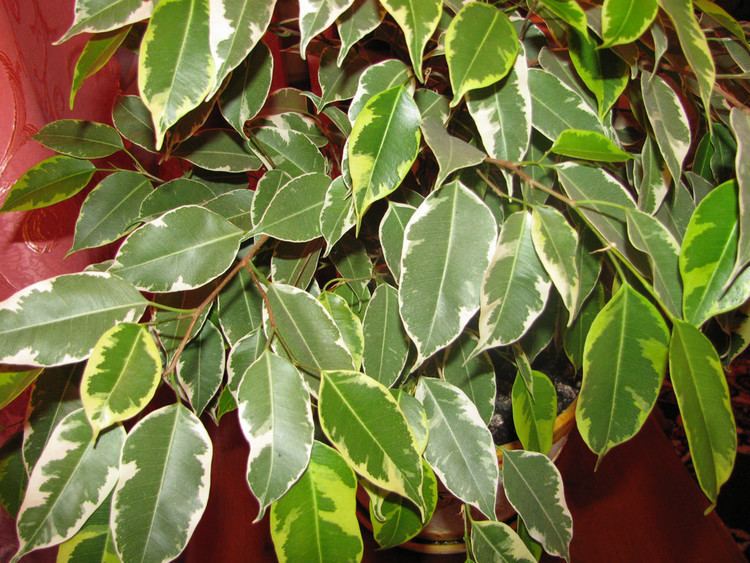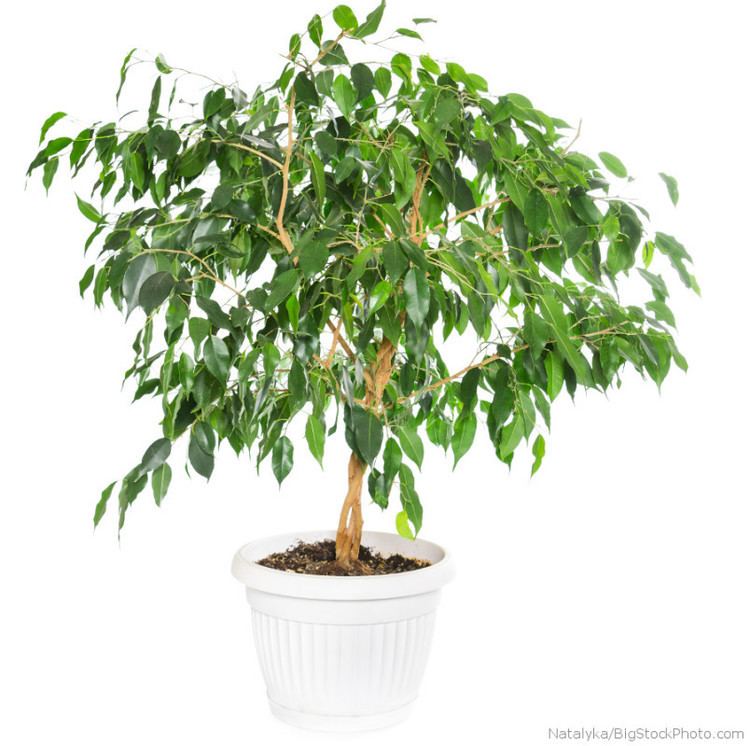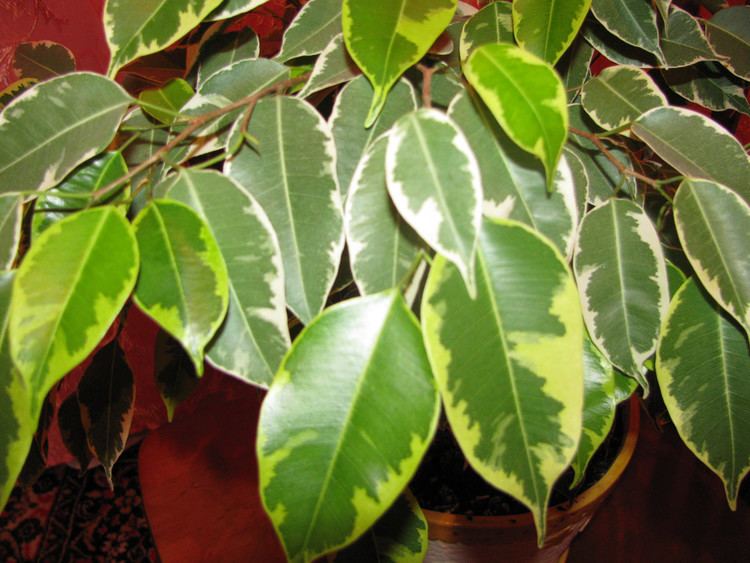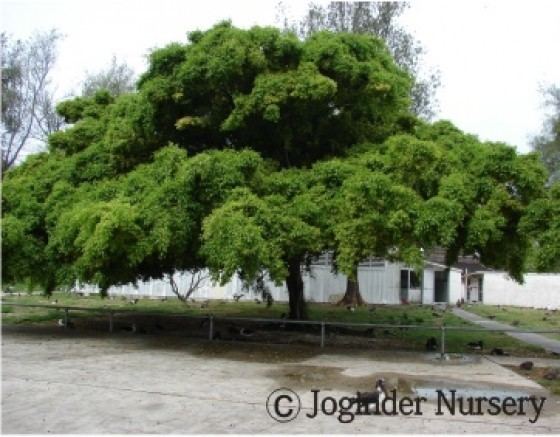Scientific name Ficus benjamina Rank Species | Tribe Ficeae Subgenus Conosycea Higher classification Fig | |
 | ||
Similar Fig, Ficus microcarpa, Rubber fig, Dracaena, Peace lily | ||
The fickle yet popular houseplant ficus benjamina
Ficus benjamina, commonly known as weeping fig, benjamin fig or Ficus tree, and often sold in stores as just ficus, is a species of flowering plant in the family Moraceae, native to Asia and Australia. It is the official tree of Bangkok. The species is also naturalized in the West Indies and in the States of Florida and Arizona in the United States.
Contents
- The fickle yet popular houseplant ficus benjamina
- How to repot ficus benjamina planting basics
- Cultivation
- Destructive roots
- Allergic Reactions
- References

Ficus benjamina is a tree reaching 30 metres (98 ft) tall in natural conditions, with gracefully drooping branchlets and glossy leaves 6–13 cm (2–5 in), oval with an acuminate tip. In its native range, its small fruit are favored by some birds, such as the superb fruit dove, wompoo fruit dove, pink-spotted fruit dove, ornate fruit dove, orange-bellied fruit dove, Torresian imperial pigeon, purple-tailed imperial pigeon (Frith et al. 1976).

How to repot ficus benjamina planting basics
Cultivation

In tropical latitudes, the weeping fig makes a very large and stately tree for parks and other urban situations, such as wide roads. It is often cultivated for this purpose.

Ficus benjamina is a very popular houseplant in temperate areas, due to its elegant growth and tolerance of poor growing conditions; it does best in bright, sunny conditions but will also tolerate considerable shade. It requires a moderate amount of watering in summer, and only enough to keep it from drying out in the winter. It does not need to be misted. The plant is sensitive to cold and should be protected from strong drafts. When grown indoors, it can grow too large for its situation, and may need drastic pruning or replacing. Ficus benjamina has been shown to effectively remove gaseous formaldehyde from indoor air.
The fruit is edible, but the plant is not usually grown for its fruit. The leaves are very sensitive to small changes in light. When it is turned around or re-located it reacts by dropping many of its leaves and replacing them with new leaves adapted to the new light intensity.
There are numerous cultivars available (e.g. 'Danielle', 'Naomi', 'Exotica', and 'Golden King'). Some cultivars include different patterns of colouration on the leaves, ranging from light green to dark green, and various forms of white variegation.
In cultivation in the UK, this plant and the variegated cultivar 'Starlight' have gained the Royal Horticultural Society's Award of Garden Merit.
The miniature cultivars, especially 'Too Little', are among the most popular plants for indoor bonsai.
Destructive roots
The United States Forest Service states "Roots grow rapidly, invading gardens, growing under and lifting sidewalks, patios, and driveways." They conclude that its use in tree form is much too large for residential planting, therefore in these settings this species should only be used as a hedge or clipped screen.
Allergic Reactions
The plant is a major source of indoor allergens, ranking as the third most common cause of indoor allergies after dust and pets. Common allergy symptoms include rhinoconjunctivitis and allergic asthma. Ficus plants can be of particular concern to latex allergy sufferers due to the latex in the ficus plant, and should not be kept in the environment of latex allergy sufferers. In extreme cases, ficus exposure can cause anaphylactic shock in latex allergy sufferers.
Allergy to ficus plants develops over time and from exposure. The allergy was first observed in occupational settings amongst workers who regularly handled the plants. A study of workers at four plant-leasing firms showed that 27% of the workers had developed antibodies in response to exposure to the plants.
